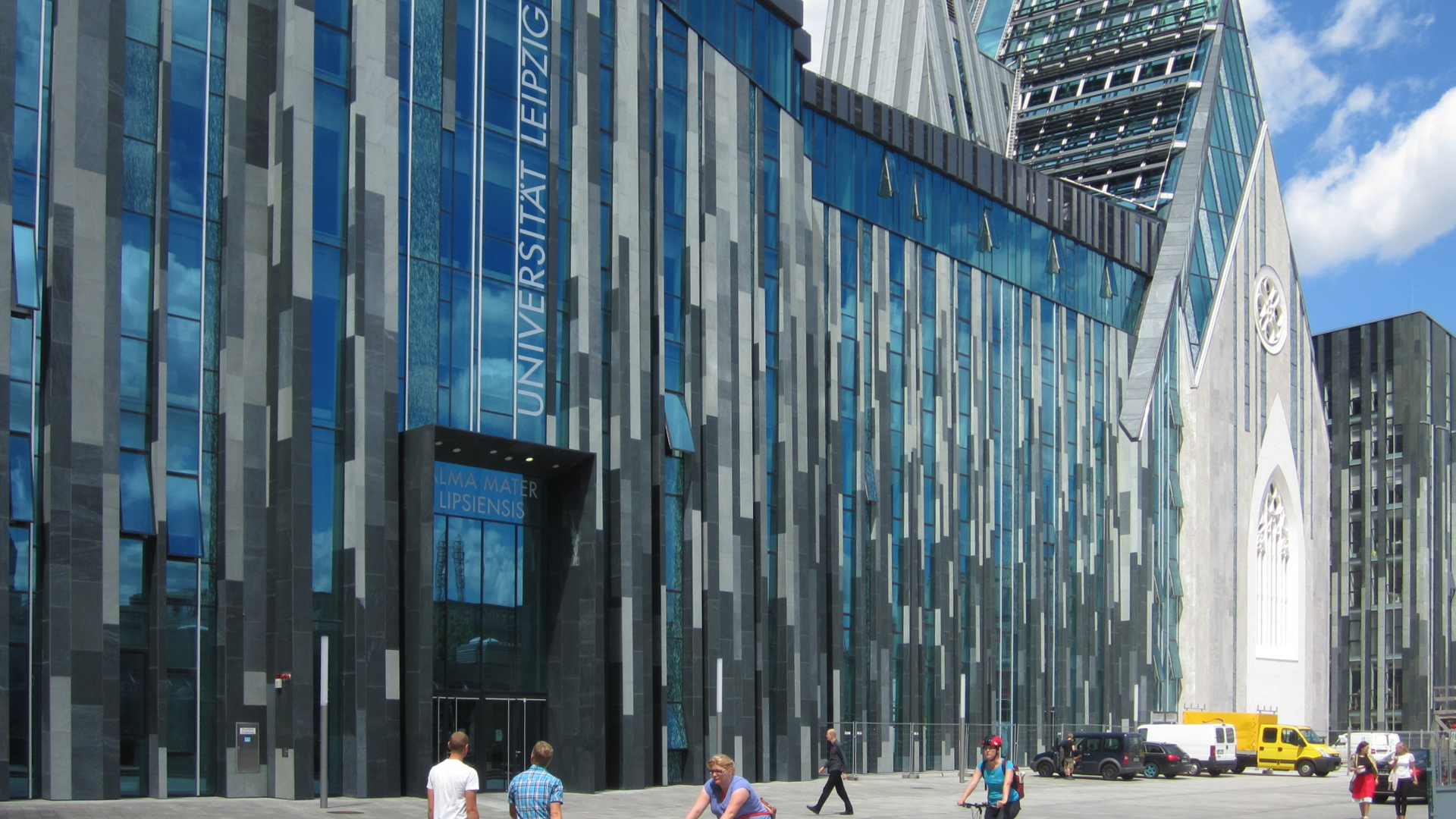Augusteum (Leipzig) on:
[Wikipedia]
[Google]
[Amazon]
The Augusteum was a building on the
 In 2006, the campus at Augustusplatz, consisting of the main building (''Hauptgebäude'') at the place of the former Augusteum and Paulinerkirche, the lecture hall building (''Hörsaalgebäude''), seminar building (''Seminargebäude'') and dining hall building (''Mensagebäude''), began reconstruction. The new building for the faculty of economic sciences and parts of the renovated seminar building, the long-overdue new dining hall building, and other parts, including the new Augusteum and Paulinum have all been completed.
In 2006, the campus at Augustusplatz, consisting of the main building (''Hauptgebäude'') at the place of the former Augusteum and Paulinerkirche, the lecture hall building (''Hörsaalgebäude''), seminar building (''Seminargebäude'') and dining hall building (''Mensagebäude''), began reconstruction. The new building for the faculty of economic sciences and parts of the renovated seminar building, the long-overdue new dining hall building, and other parts, including the new Augusteum and Paulinum have all been completed.
File:Baustelle paulinum augusteum 2010.jpg, The building under construction
File:PaulinumAugusteum72012.JPG, The complex of buildings in 2012
File:Schinkeltor, Neues Augusteum, Universität Leipzig, 2013.JPG, The Schinkeltor, back entrance of the Augusteum
File:Universität Leipzig - Neues Augusteum (Innen, Februar 2013) 02.JPG, Inside the Augusteum
Augustusplatz
The Augustusplatz is a square located at the east end of the city centre of Leipzig, borough Leipzig-Mitte. It is the city's largest square and one of the largest (and, prior to almost all its buildings being destroyed in bombing in the Second Wor ...
in Leipzig
Leipzig ( , ; Upper Saxon: ) is the most populous city in the German state of Saxony. Leipzig's population of 605,407 inhabitants (1.1 million in the larger urban zone) as of 2021 places the city as Germany's eighth most populous, as ...
, Germany
Germany,, officially the Federal Republic of Germany, is a country in Central Europe. It is the second most populous country in Europe after Russia, and the most populous member state of the European Union. Germany is situated betwe ...
, to the left of the Paulinerkirche. It was built on the original site of the University of Leipzig
Leipzig University (german: Universität Leipzig), in Leipzig in Saxony, Germany, is one of the world's oldest universities and the second-oldest university (by consecutive years of existence) in Germany. The university was founded on 2 Decemb ...
and served as its main building.
History
The Augusteum was built between 1831 and 1836 to plans by Albert Geutebrück, though its façade referred back to aclassicist
Classics or classical studies is the study of classical antiquity. In the Western world, classics traditionally refers to the study of Classical Greek and Roman literature and their related original languages, Ancient Greek and Latin. Classics ...
design by Karl Friedrich Schinkel
Karl Friedrich Schinkel (13 March 1781 – 9 October 1841) was a Prussian architect, city planner and painter who also designed furniture and stage sets. Schinkel was one of the most prominent architects of Germany and designed both neoclassic ...
. The building had, however, already reached its full capacity by the 1870s since the university had grown due to major urban expansion in this period. The building was generously rebuilt and expanded from 1892 to 1897 by the architect Arwed Rossbach. The Augusteum had originally only had a front onto the Augustusplatz, but, due to the demolition of the old Paulinum (i.e. the building of the medieval St. Paul's monastery and St. Paul's college), could now receive a south wing known as the Johanneum (1895), a middle wing known as the Albertinum (1896) and a west wing known as the Paulinum (1896). The renovation also altered the building's style to fit in better with other buildings on the Augustusplatz, with Neo-Renaissance and Neo Gothic
Gothic Revival (also referred to as Victorian Gothic, neo-Gothic, or Gothick) is an architectural movement that began in the late 1740s in England. The movement gained momentum and expanded in the first half of the 19th century, as increasingly ...
façades being added to the Paulinerkirche and Augusteum to plans by Rossbach.
The Augusteum was heavily damaged by bombing in the Second World War
World War II or the Second World War, often abbreviated as WWII or WW2, was a world war that lasted from 1939 to 1945. It involved the vast majority of the world's countries—including all of the great powers—forming two opposi ...
, so the East German
East Germany, officially the German Democratic Republic (GDR; german: Deutsche Demokratische Republik, , DDR, ), was a country that existed from its creation on 7 October 1949 until its dissolution on 3 October 1990. In these years the state ...
government decided it was beyond repair and (like the fully intact Paulinerkirche) ill-fitting for their concept of a university. Thus the two buildings were dynamited on 30 May 1968. This cleared an area on which a new university complex in functional and sober DDR architectural style was built in 1975. Until 1971 a rectory building was on the site of the Augusteum's main wing.
After German reunification, a citizens' initiative for the reconstruction of the university church and Augusteum of Leipzig gathered, but after years of litigation, demands for reconstruction were waived in favour of the university's need for modern teaching and research facilities. A plan was drawn up by Erick van Egeraat for a campus building recalling parts of the Augusteum's façade, and an auditorium designed to appear like the Paulinerkirche, but the historic main building of the university would not rise again.
Reconstruction
Gallery
References
{{authority control 1831 establishments in Germany School buildings completed in 1836 Buildings and structures in Leipzig Buildings and structures in Germany destroyed during World War II Leipzig University Classicist architecture in Germany